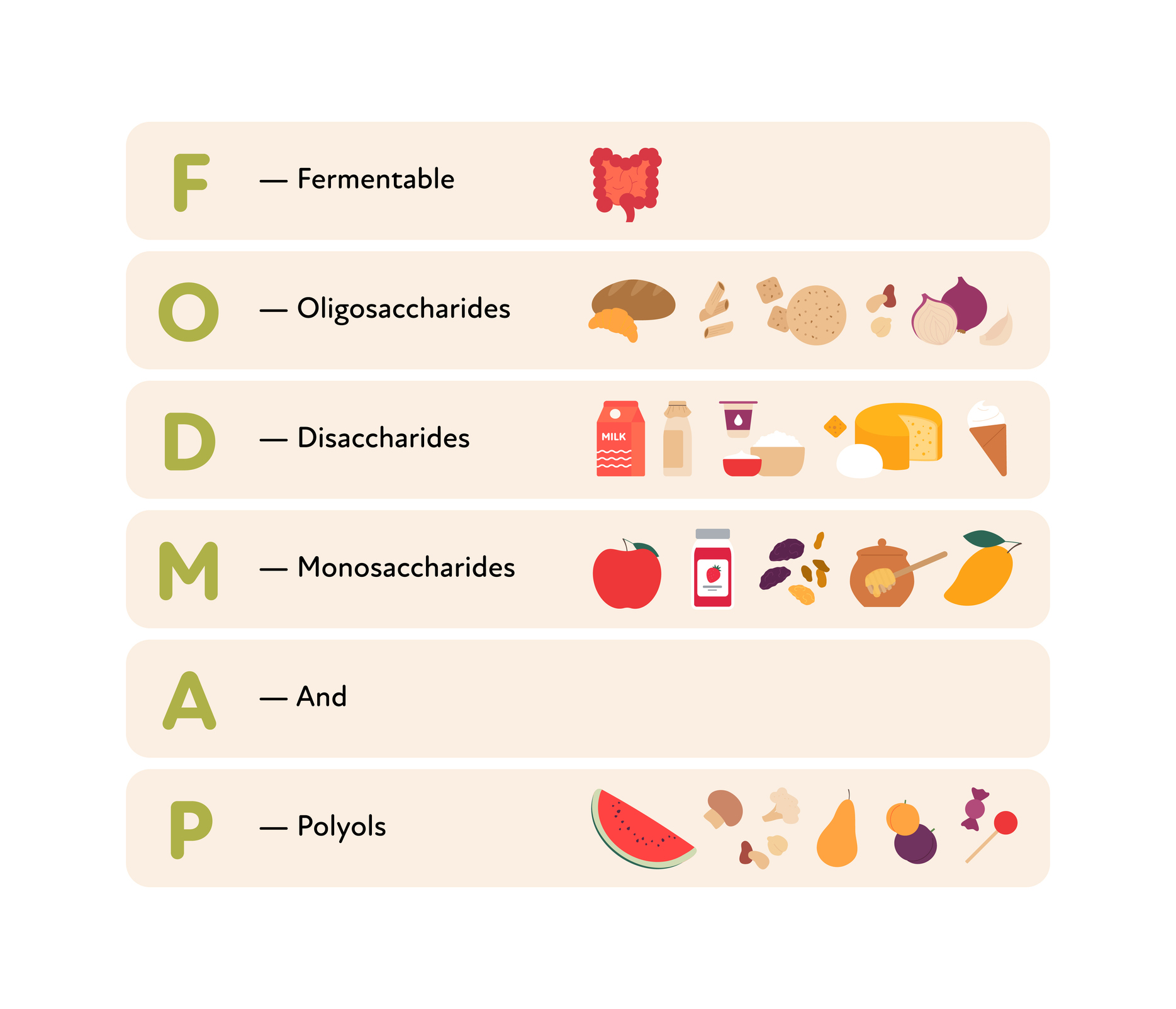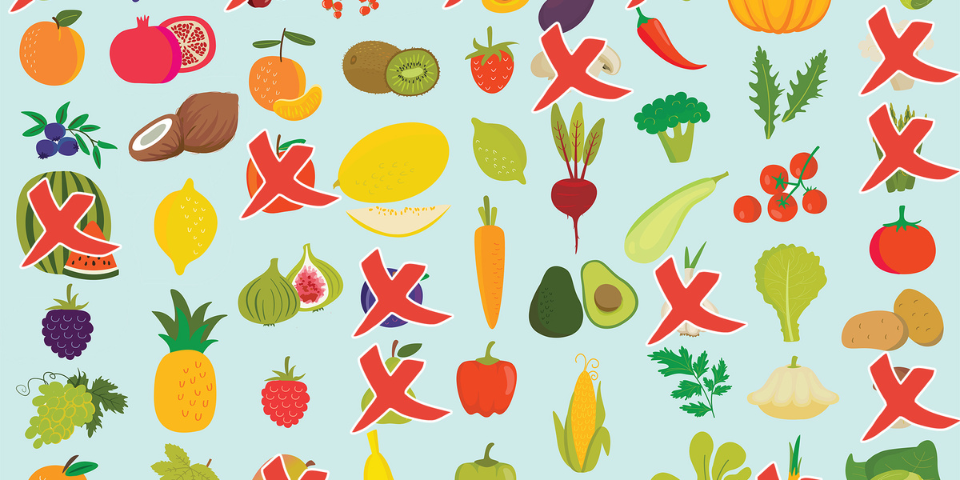If you've been struggling with ongoing digestive issues, you're probably familiar with how certain foods can disrupt your gut and lead to uncomfortable symptoms like chronic stomach pain, bloating, gas, diarrhea, and constipation.
Identifying the specific foods that are causing your discomfort can be challenging, but research has shown that a low-FODMAP diet may be able to help alleviate digestive issues by pinpointing the foods most likely to trigger them.
If you're considering trying a low-FODMAP diet to alleviate bloating and keep your stomach calm, here's what you need to know.
Understanding the Low-FODMAP Diet

The low-FODMAP diet, also known as the "FODMAP Diet" or "IBS Diet," involves temporarily eliminating a group of carbohydrates known as FODMAPs: fermentable oligosaccharides, disaccharides, monosaccharides, and polyols. By removing and then reintroducing these poorly absorbed carbohydrates, you can determine which high-FODMAP foods your gut can handle and which ones are causing issues.
The diet was originally developed by researchers at Monash University in Australia to address the role of these carbs in irritable bowel syndrome (IBS).
Is the Low-FODMAP Diet Healthy?
As a short-term approach, the low-FODMAP diet is a safe way to identify foods that may be triggering your digestive issues and provide relief. However, many nutritious foods, such as legumes, whole grains, fruits, and vegetables, are high in FODMAPs, so it's important not to eliminate them permanently.
"We want people to include these foods in their diet," says Andrea N. Giancoli, M.P.H., R.D. "The goal is to pinpoint which foods are causing symptoms and gradually reintroduce the rest as part of a balanced diet."
Importance of Professional Guidance
The process of elimination and reintroduction can be complex. While it may be tempting to follow a printable FODMAP food list on your own, it's crucial to consult with a dietitian specializing in gastrointestinal disorders who can assist you through each step.
"There are various factors at play in the stomach and small intestine, so self-diagnosing is not recommended," Giancoli explains. "It's essential to determine if an elimination diet is necessary and effective."
During the elimination phase, it's not as simple as eliminating all FODMAP-containing foods. Some individuals may tolerate certain high-FODMAP foods in small quantities without experiencing symptoms. For example, wheat is restricted on a low-FODMAP diet, but a dietitian may allow occasional consumption of a slice of wheat bread.
Additionally, FODMAP food lists can be misleading. Bananas, for instance, are high-FODMAP when ripe but low-FODMAP when unripe. Legumes are generally high in FODMAPs, but canned chickpeas and lentils may have lower FODMAP levels, and small portions may not trigger symptoms.
The reintroduction phase can also be challenging. Understanding the distinctions between various FODMAP subgroups may be overwhelming. A dietitian can guide you through the process of reintegrating each subgroup into your diet.
"It's crucial to approach this methodically to determine which foods and FODMAP groups are causing symptoms and which are not," says Alicia Galvin, R.D.
In conclusion, everyone's tolerance for FODMAPs varies. Working with a dietitian can help you identify which foods you should avoid and in what quantities, ensuring you're not restricting yourself unnecessarily and missing out on essential nutrients.
Approved Foods on a Low-FODMAP Diet

According to researchers at Monash University, the following low-FODMAP foods are suitable during the elimination phase:
- Vegetables: Eggplant, green beans, bok choy, bell pepper, carrot, cucumber, lettuce, potato, tomato, zucchini
- Fruits: Cantaloupe, grapes, kiwi, mandarin oranges, oranges, pineapple, strawberry, unripe bananas
- Dairy and alternatives: Almond milk, brie, camembert, feta, hemp milk, hard cheeses, lactose-free milk, soy milk made from soy protein extract or "hulled" soy beans
- Protein: Eggs, firm tofu, plain cooked meats, seafood, tempeh
- Grains and alternatives: Corn (cob, polenta, tortilla, popcorn), amaranth (puffed), oats, bulgur, quinoa, millet, brown rice, buckwheat, sorghum, spelt sourdough bread, wheat/rye/barley-free breads
- Sweets: Dark chocolate, maple syrup, rice malt syrup, table sugar
- Nuts and seeds: Macadamia nuts, peanuts, pumpkin seeds, walnuts
Foods to Avoid on a Low-FODMAP Diet

During the elimination phase, it's generally recommended to avoid the following high-FODMAP foods and reintroduce them gradually with professional guidance:
- Vegetables: Artichoke, asparagus, cauliflower, garlic, green peas, leeks, mushrooms, onion, sugar snap peas
- Fruits: Apples, cherries, dried fruit, mangoes, nectarines, peaches, pears, plums, watermelon, ripe bananas
- Dairy and alternatives: Cow's milk, custard, evaporated milk, ice cream, soy milk made from soy beans (as opposed to soy protein extract or "hulled" soy beans), sweetened condensed milk, yogurt
- Protein: Legumes, marinated meats, processed meats
- Grains: Wheat/rye/barley-based breads, breakfast cereals, snack products
- Sweets: High-fructose corn syrup, honey, sugar-free candy
- Nuts and seeds: Cashews, pistachios
Weight Loss and the Low-FODMAP Diet
While you may experience some weight loss due to the reduction of sugar intake, the low-FODMAP diet is not intended for weight loss purposes.
"I don't recommend this diet for weight loss, only as a therapeutic measure," Galvin emphasizes. "Sustainable weight loss requires long-term changes in diet and lifestyle, and the low-FODMAP diet is not designed for long-term use."
Additionally, following a low-FODMAP diet can make it challenging to find healthy recipes, and it's still possible to overindulge in FODMAP-friendly foods like table sugar and dark chocolate. However, if you're struggling with digestive discomfort, addressing your symptoms should take precedence over rapid weight loss.
It's important to remember that the low-FODMAP diet should not be attempted without professional guidance. With the support of your healthcare provider and a registered dietitian, this approach can help you identify problematic foods and alleviate gastrointestinal issues.
